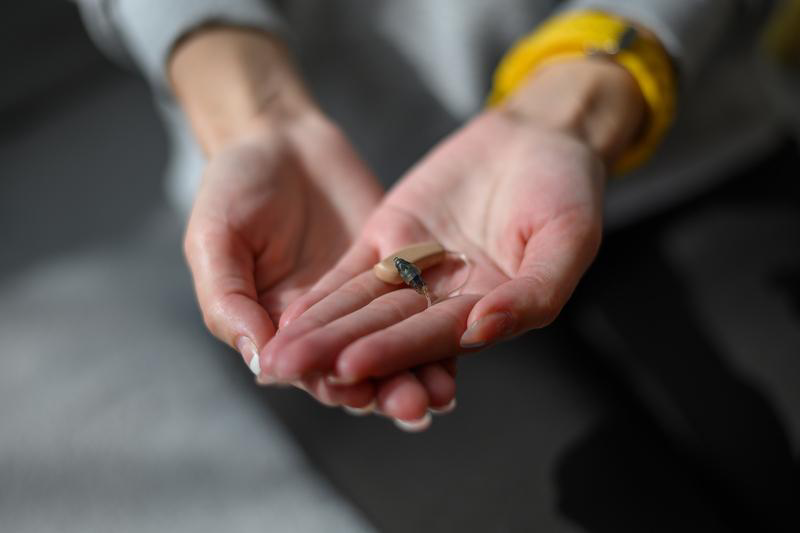Hearing aids are incredible devices that can significantly enhance the quality of life for individuals with hearing loss. These small, sophisticated gadgets have the power to restore lost sounds and reconnect people with the world around them. However, becoming a new hearing aid owner comes with a learning curve, and mistakes are not uncommon. In this article, we will explore the four most frequent mistakes made by individuals who have recently acquired hearing aids and discuss how to avoid or address these issues for a more successful hearing aid experience.
Table of Contents
Neglecting Proper Maintenance
One of the most common mistakes new hearing aid owners make is neglecting proper maintenance. Hearing aids are intricate electronic devices that require regular care to ensure optimal performance and longevity. Failing to clean and maintain your hearing aids can lead to various problems, such as reduced sound quality, malfunction, and even damage.
To avoid this mistake, it’s crucial to establish a routine for cleaning and caring for your hearing aids. Start by inspecting them daily for any debris, earwax, or moisture. Clean the devices using hearing aid supplies provided by your audiologist. Additionally, make sure to change the wax guards and filters regularly, following the manufacturer’s guidelines.
Proper storage is also essential. Invest in a protective case to shield your hearing aids from dust, moisture, and accidental damage. By incorporating these simple maintenance habits into your daily routine, you can significantly extend the lifespan of your hearing aids and maintain their optimal functionality.
Ignoring the Adjustment Period
Many new hearing aid users expect an immediate and flawless improvement in their hearing abilities. However, it’s essential to recognize and accept the adjustment period that comes with wearing hearing aids. The brain needs time to adapt to the amplified sounds and the new way in which it processes auditory information.
Some individuals may find that certain sounds initially seem too loud or unnatural. Others may experience mild discomfort or irritation. Ignoring this adjustment period and expecting instant perfection can lead to frustration and disappointment.
To overcome this mistake, approach the initial weeks of hearing aid use with patience and realistic expectations. Gradually increase the wearing time each day, allowing your brain to acclimate to the amplified sounds. Communicate openly with your audiologist about any concerns or discomfort you may be experiencing, as they can make necessary adjustments to the settings of your hearing aids. Remember, the more patient and understanding you are during this adaptation phase, the more successful and rewarding your overall hearing aid experience will be.
Failure to Customize Settings
Hearing aids are not one-size-fits-all devices. Each individual’s hearing loss is unique, requiring personalized adjustments to the settings of the hearing aids. A common mistake made by new hearing aid owners is failing to take advantage of the customization options available to them.
During the fitting and adjustment appointments with your audiologist, make sure to communicate openly about your experiences and preferences. Your audiologist can fine-tune the settings, such as volume levels, program options, and frequency adjustments, to match your specific hearing needs and lifestyle.
Additionally, modern hearing aids often come with advanced features, such as Bluetooth connectivity, directional microphones, and noise reduction technology. Learning how to use and customize these features can significantly enhance your hearing experience in various environments.
Regular follow-up appointments with your audiologist are crucial for monitoring your hearing health and making any necessary adjustments to your hearing aids. By actively participating in the customization process, you can maximize the benefits of your hearing aids and address any issues that may arise over time.
Neglecting Communication Strategies
Hearing aids alone may not solve all communication challenges associated with hearing loss. New hearing aid owners often make the mistake of relying solely on the devices without incorporating effective communication strategies.
It’s important to be proactive in communication situations, especially in noisy environments or when speaking with multiple people. Inform your conversation partners about your hearing loss and ask for their cooperation in creating a conducive listening environment. Position yourself in well-lit areas to make it easier to lip-read and pick up on visual cues.
Moreover, consider using assistive listening devices or smartphone apps that can complement your hearing aids. These technologies can stream phone calls directly to your hearing aids, provide captions for spoken words, or enhance your ability to hear in challenging acoustic environments.
Conclusion
Becoming a new hearing aid owner is a transformative journey that comes with its own set of challenges and adjustments. By avoiding the common mistakes discussed in this article and actively engaging in proper maintenance, allowing for an adjustment period, customizing settings, and incorporating effective communication strategies, you can make the most of your hearing aids and enjoy a more fulfilling auditory experience. Remember, communication with your audiologist and a proactive approach to your hearing health are key elements in ensuring the long-term success of your hearing aid journey.


 Home
Home









